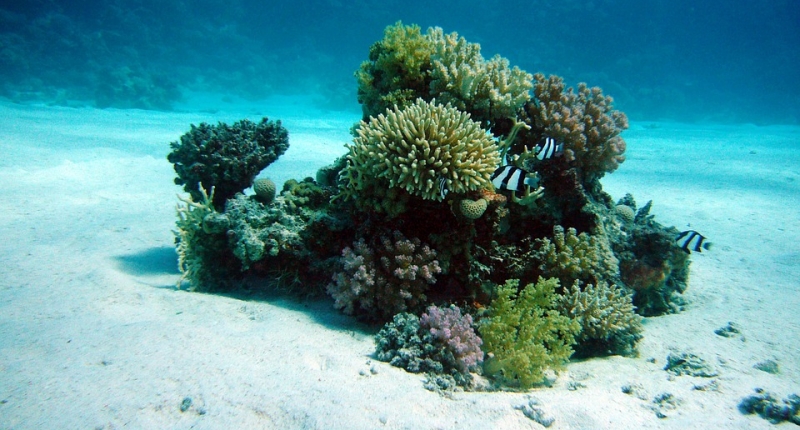Using DNA to Protect Coral Reefs

Coral reefs are well known for their biodiversity, however, the genetic diversity contained within these unique ecosystems is not well understood. Kimberly Selkoe, a long time NCEAS associate, and her research team, recently published a paper in Proceedings of the Royal Society B , investigating how patterns of genetic diversity vary across the Hawaiian Archipelago. Additionally, they analyzed if this variation in genetic diversity could be ascribed to characteristics and stressors related to location.
While it is common practice to conserve coral reef areas associated with hotspots of genetic diversity, there is little data to guide these efforts. To begin filling this knowledge gap, Selkoe et al. analyzed 17,000 unique DNA samples from 47 species of reef animals found in the Hawaiian Archipelago. The effort revealed a link between species diversity and genetic diversity. Those Hawaiian reefs with the most extensive live coral cover, and therefore most extensive biodiversity, also have the largest genetic diversity.
By gaining insight into how biodiversity and genetic diversity are connected, researchers may be able to use this information to conduct rapid assessments of species diversity. This new information could also help create new metrics for measuring resilience and adaptation abilities, which in turn can guide conservation priorities.
The DNA of Coral Reef Biodiversity: Predicting and Protecting Genetic Diversity of Reef Assemblages
K. Selkoe, O. Gaggiotti, E. Treml, J. Wren, M. Donovan, Hawai'i Reef Connectivity Consortium, R. Toonen.
Proceedings of the Royal Society B, 27 April 2016, Vol. 283, Issue 1829, DOI: 10.1098/rspb.2016.0354
Media Coverage
